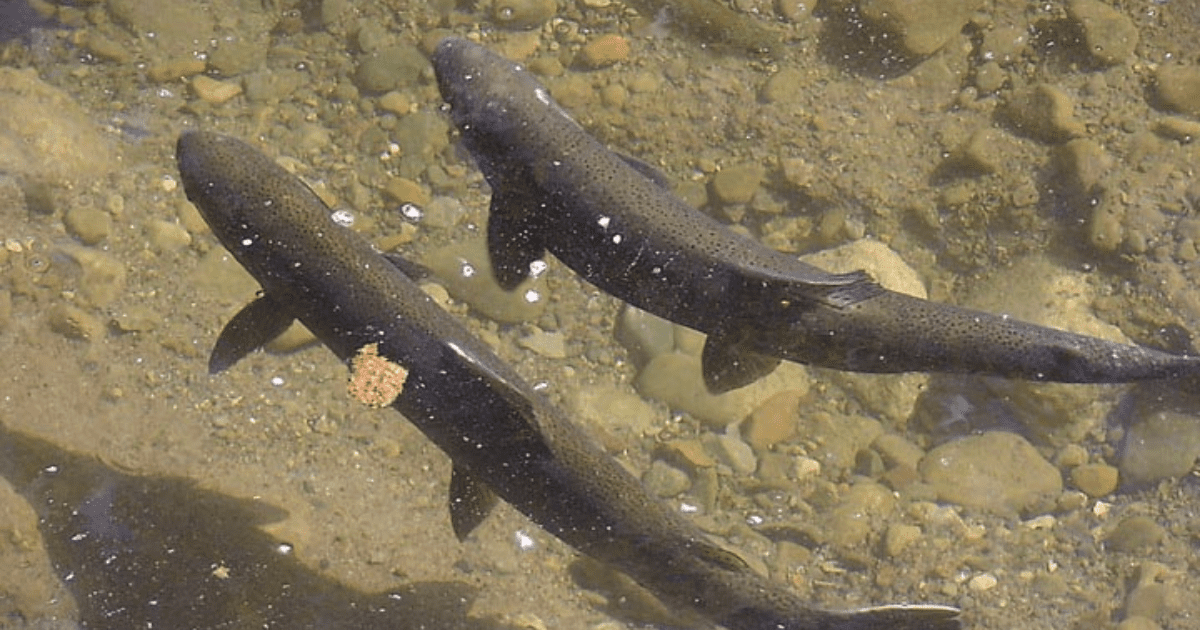Trout Clout: Victory for Protections of Southern Steelhead
California ESA Listing of Southern California Steelhead Advances
The science and data are clear. Southern California steelhead are on the brink of extinction. Southern steelhead populations have been decimated at the southern end of their native range, plummeting from tens of thousands to a few hundred remaining adults due to habitat loss, fragmentation, and degradation from urbanization.
On April 21, an important milestone was achieved to prevent the irreversible loss of this iconic Southern California fish species. The California Fish and Game Commission unanimously voted that the state ESA listing of Southern steelhead may be warranted. This decision means that further action will be taken on CalTrout’s petition to list Southern California steelhead as endangered under the California Endangered Species Act (CESA).
“Based on the science and based on the law, it is very clearcut for me, and certainly I find that for the Southern California steelhead, listing may be warranted,” stated Director Samantha Murray during the California Fish and Game Commission meeting.
This unanimous vote in favor carries weight in that it designates Southern California steelhead as a candidate species with ESA protection during a year-long species status review by the California Department of Fish and Wildlife (CDFW). These ocean-going trout are thus fully protected as an endangered species during this review period. At the end of the CDFW species status review, the Commission will then decide whether the species should be listed as endangered, or whether further action is not warranted.
Despite being federally listed as endangered over 25 years ago, Southern steelhead populations have not rebounded. Only 177 adult Southern steelhead have been documented in Southern California during this time. Just like the federal Endangered Species Act listing, the request for California Endangered Species Act listing specifies Southern steelhead should be protected in all waterways within their historical range below existing barriers. Under the CESA listing, the scope and scale of watershed restoration work can be expanded to recover this species. State regulations on in-stream barriers and stream channel integrity will have meaningful impact on allowing these anadromous fish to survive and thrive.
Southern steelhead are uniquely adapted to Southern California’s warmer Mediterranean climate. As climate change continues to increase water temperatures and alter flow regimes along the entire west coast, Southern steelhead could be critical to the long-term resiliency of its northern relatives.
The Commission’s recent decision is a promising step towards the full protection of Southern California steelhead. We need your sustained support over the next year as we continue to advocate for full and permanent protection of Southern California steelhead.
For more information on the CESA listing and Southern steelhead, see CalTrout’s OpEd in the San Diego Union Tribune.
Cover photo by Mark Capelli.






4 Comments
The reason Endangered Species status has not improved the condition of SoCal steelhead over the past 25 years is: status listing does almost nothing, & almost nothing except ‘research’ has been done for these fish over the past 25 years. Reality is that no appreciable habitat improvement/restoration has been accomplished & habitat continues to degrade mainly unhampered. And it is discouraging to learn that CESA listing only applies to fish occurring below first barriers. What will such a listing physically do for those extremely rare remnants? Strip the concrete from SoCal streams & rivers? Stop the juggernaught of unbridled SoCal development? Create a viable & necessary urban/wilderness interface in Southern California? In view of the current reality one would have to be extremely naive to think any of those things will happen. The CESA listing may garner some donations & create some research jobs, but that is as far as it will go. This admittedly cynical conclusion based on my own experience working & writing on behalf of the San Gabriel River native trout population (landlocked steelhead) & what I have observed over a lifetime.
In my own view the only chance for SoCal steelhead exist in the upper drainages of the Santa Ana, Santa Inez, & particularly the East, West & North forks of the San Gabriel River, which hold a viable gene bank of SoCal steelhead. Sadly, I visited the SG East Fork last month & found it severely degraded by a population of homeless gold miners living along its banks. Even though the stream is within the National Monument & placering has been declared illegal there, apparently the numerous stewarding government agencies & citizen ‘friend’ groups supposedly operating there, there doen’t seem to be enough interest to summon the money for occasional patrols; nor does CF&W show any interest in applying protective regs to that river (it remains under general catch & kill trout regs). If Cal Trout has any real “clout” perhaps it would be a good idea to look into that. If you are interested in discussing any of this, I’d be glad to. ~Steven ‘Bird’ Loiseau
100% make east fork off limits to bathers and gold pandering … make it catch and release on and even on top of a Cali fishing license make .. Fly Fish Only and permit required which I’d gladly pay for conservation. Efforts … I’d also gladly give up a weekend every month to patrol and enforce ..
East fork and its tributaries are a Diamond in So Cal .., we need to protect it …
Steelhead are an essential element of the ecosystem … once this species is gone it’s gone …
It would be encouraging to see some type of patrol either from Fish and Game or CA Parks Dept.!
Great reply Steven!!